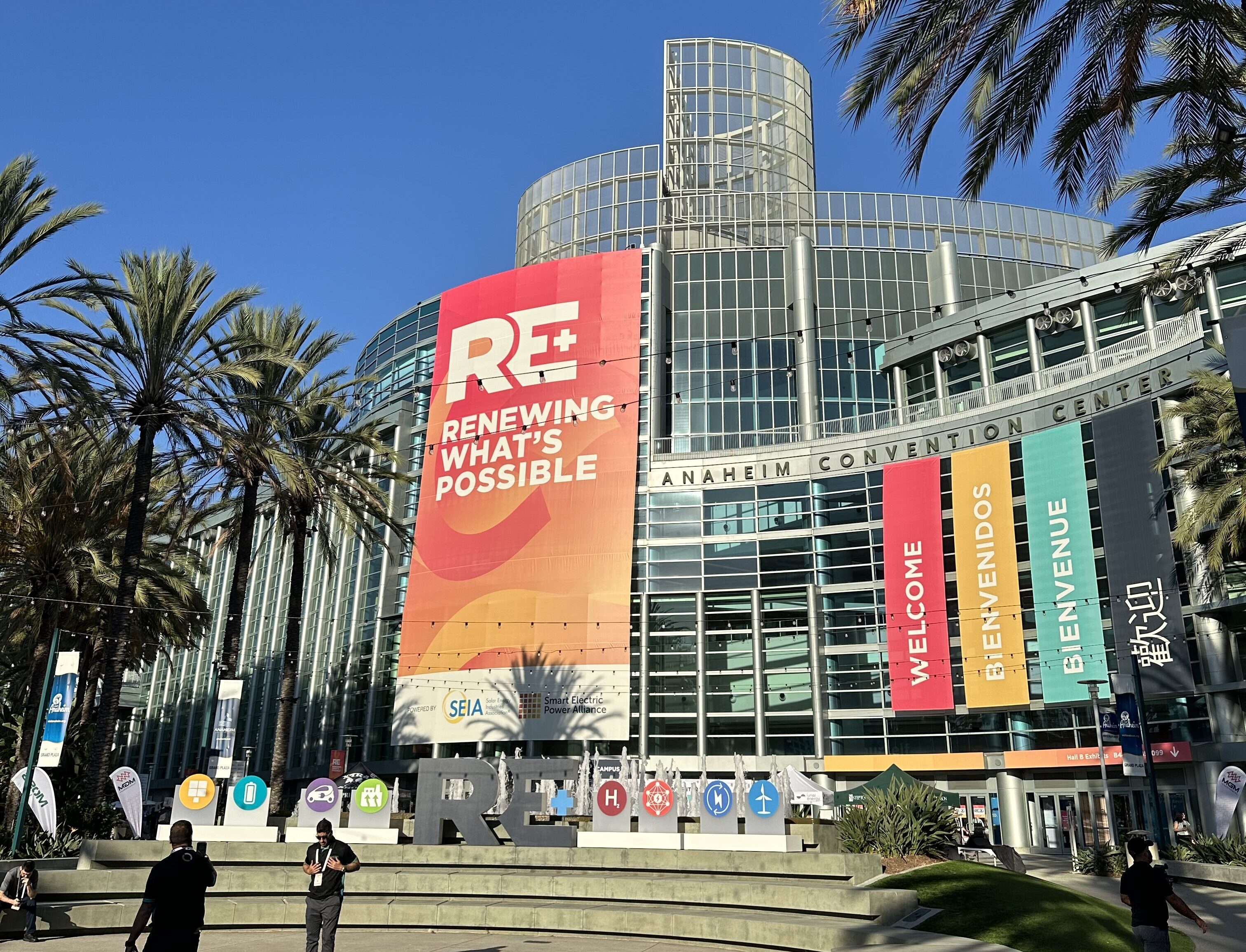
Last week I traveled to Anaheim, California for RE+ 2024. It’s one of the biggest conferences I’ve ever attended, with an estimated 50,000 attendees. There’s no way to cover everything, but I’d like to share some of my key takeaways from this renewables-focused event.
Will AI Make or Break the Grid?
Artificial Intelligence (AI) is poised to transform the U.S. electrical grid. The grid is under increasing strain as renewables are integrated and demand continues to grow. AI has the potential to prevent breakdowns by analyzing vast amounts of data from sensors, smart meters, and PMUs. This allows grid operators to detect issues before they become catastrophic—essentially turning maintenance into a predictive game. AI can also help balance the intermittent nature of renewables, smoothing out the peaks and troughs of solar and wind generation, while optimizing energy flow to reduce losses.
But we can’t lose sight of reality—AI, while powerful, is not a panacea. Its hype is at an all-time high, and some caution is warranted. Still, the need for smarter, faster solutions to manage grid complexity is real, and AI is one of the most promising tools at our disposal.
Takeaway Question: How do we balance the potential benefits of AI with healthy skepticism about its limitations?
Supply Chain Challenges and Domestic Manufacturing
The renewables industry, especially solar and energy storage, is grappling with supply chain issues. Developers are facing hurdles like tariffs, global competition, and dependence on fragmented supply chains. Domestic manufacturing is on the rise, boosted by the Inflation Reduction Act, but it’s not a quick fix. Building a reliable, local supply chain for critical components—like batteries and photovoltaics—remains a tall order.
The U.S., like many other nations, still heavily relies on imports for critical materials like lithium and cobalt. Organizations like the Critical Minerals Forum are working to fill the gap, but it’s a long-term play that requires sustained effort.
Takeaway Question: How can supply chains be optimized to meet growing demand, and what role will technology play in this evolution?
Policy and Regulatory Uncertainty
The renewable energy landscape is evolving, and so are the regulatory frameworks around it. Incentives to boost renewable deployment are growing, but changes in trade policies—such as tariffs on imported solar modules—are creating headwinds. On the policy side, efforts to streamline interconnection processes and improve grid management are moving forward, opening the door for software platforms to enhance visibility across regulatory boundaries.
Despite these efforts, the pace of change is slow. There’s a lot of potential for breakthrough, but we’re not quite there yet.
Takeaway Question: What event or advancement will finally break through these barriers and accelerate change?
Utility and Co-op Ownership of Energy Storage
With support from the Inflation Reduction Act (IRA), municipal and cooperative utilities are starting to make serious investments in energy storage. This is a big deal. These entities can now take advantage of investment tax credits, increasing their participation in the storage market. As more organizations are able to shoulder the capital expenditures required for renewable projects, we’re seeing a shift in the energy landscape.
Takeaway Question: With more capital flowing into the storage space, how does this change the role of public utilities in the broader energy market?
Energy Storage for Electric Vehicles (EVs)
Energy storage systems (ESS) are essential for managing grid demand from the growing number of EVs on the road. In some cases, these systems are scaling up to handle significant loads, as demonstrated by projects like the Energy Superhub Oxford in the UK. The potential for vehicle-to-grid (V2G) technology—where EVs could send power back to the grid—is an exciting prospect, but there are still questions about whether automakers will support it. V2G could risk battery degradation, and that’s not a small concern for manufacturers.
Takeaway Question: Is Vehicle-to-Grid a realistic future, or will concerns about battery warranties limit its adoption?
Focus on Safety
Fire safety has long been a priority in energy storage, but cybersecurity is now front and center as cloud-connected systems grow in prominence. Managing Distributed Energy Resources (DERs) through cloud-connected systems opens up new security vulnerabilities. As the grid becomes more interconnected, ensuring its security is critical. With more end points and connection points being added, the complexity of managing this security challenge only increases.
Takeaway Question: How do we keep the grid safe from evolving cybersecurity threats as the number of connection points grows exponentially?
Technological Advancements in Energy Storage and Inverters
Advancements in energy storage and inverters are changing the game for solar and wind integration. There’s a strong push for higher domestic content in inverters, which are critical for connecting renewable systems to the grid. Long Duration Energy Storage (LDES) technologies are advancing, though debates persist about which solutions—lithium-ion, flow batteries, pumped hydro, or thermal—will ultimately dominate. LDES is essential for decarbonization, but its adoption hinges on further technological progress and overcoming regulatory hurdles.
Takeaway Question: How can we clear the regulatory and interconnection hurdles to encourage faster adoption of advanced storage technologies?
Want to hear more about Brian’s experience at RE+ 2024? Get in touch with the team at Simple Thread! Brian would be more than happy to share his insights, or hear yours!
Loved the article? Hated it? Didn’t even read it?
We’d love to hear from you.



